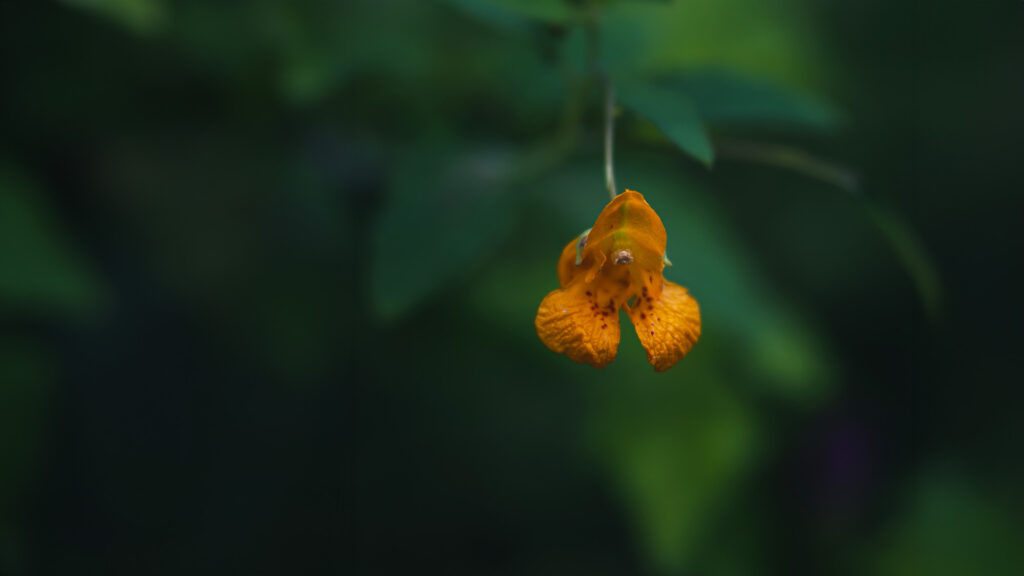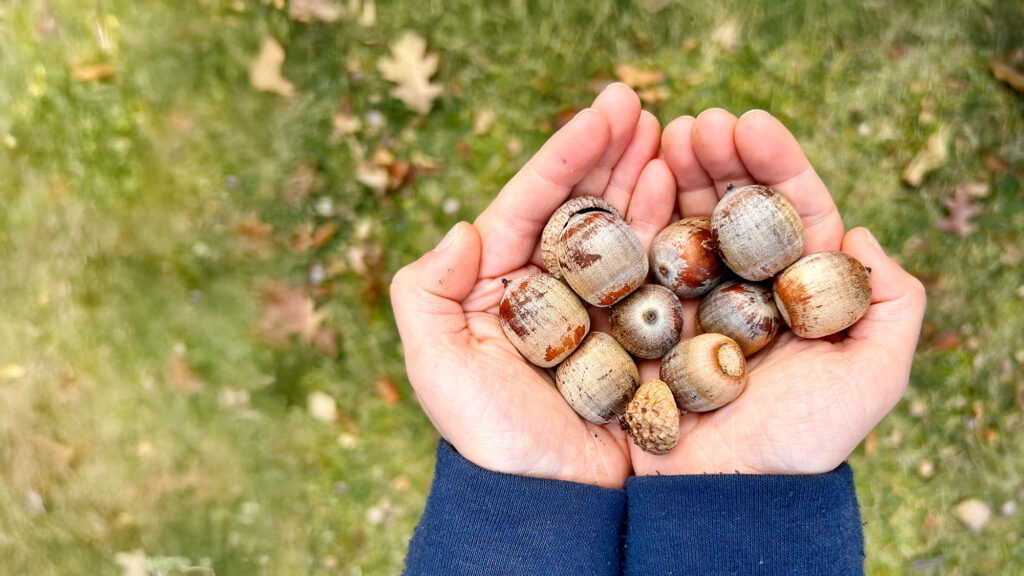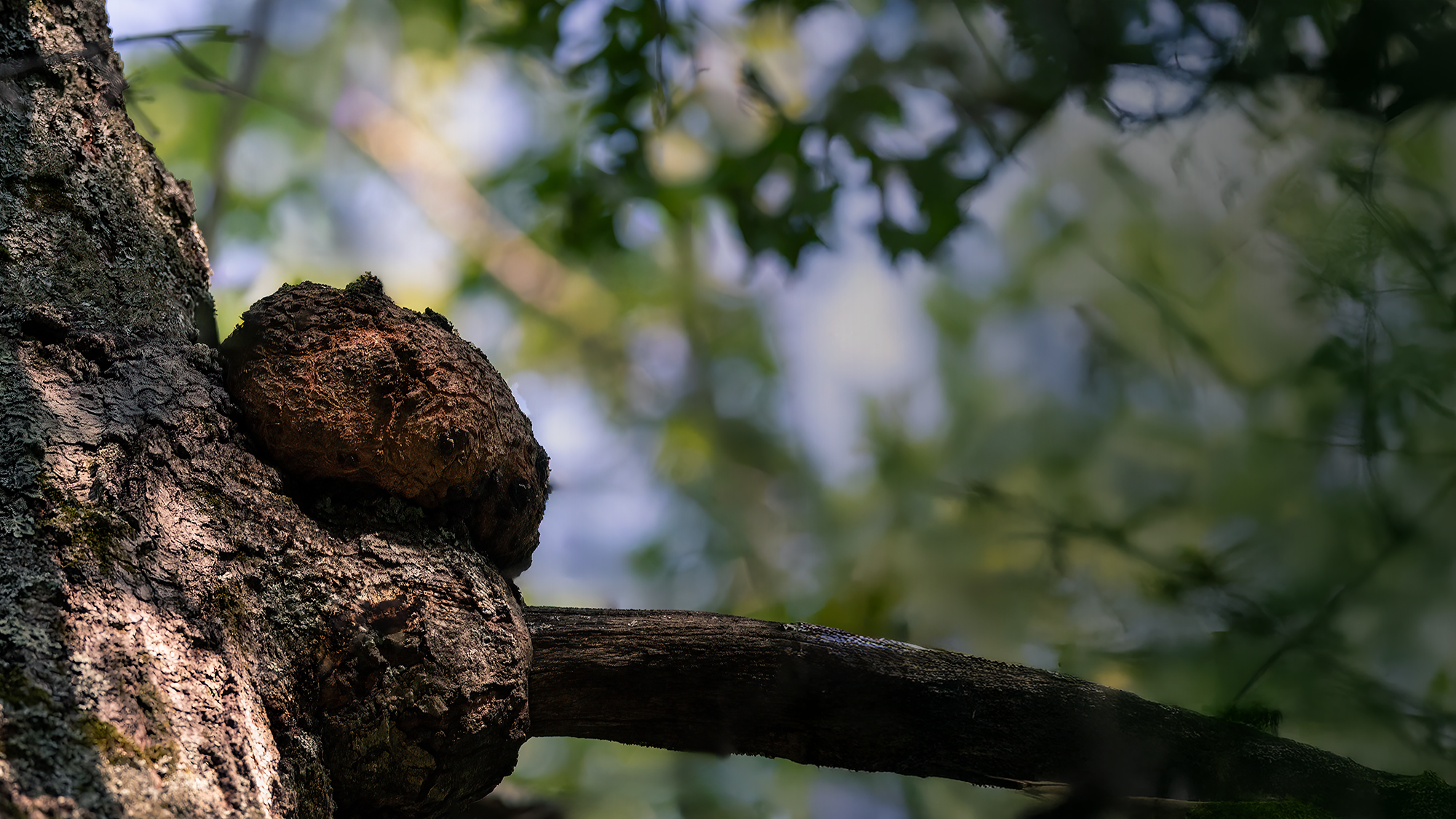
“Whoa,” my son shouted, “What is THAT?!”. He pointed to a giant, knobby growth on a tree trunk. I stopped on the trail and looked at it. “Ummm,” I stalled, trying to come up with a name. “It’s a growth on the tree, I think from an injury…”. My son eyed it suspiciously, hearing only the words “growth” and “injury”. Perhaps he thought there was a dangerous alien incubating in the monstrous bulge on the trunk. Looking at the mishappen growth and warty bark, I had to say, that seemed like a possibility. “I better look these up,” I thought to myself.
If you’ve ever spotted an oddly-shaped, bulbous growth protruding from a tree trunk, you’ve probably encountered a burl. It’s clear something isn’t right; they’re shaped all wrong, the bark is weird, and they seem to erupt from a healthy tree like a tumor. I used to look at them with distaste. But these mysterious growths are more than what they seem – they are a testament to the resilience of trees, a treasure trove for woodworkers, and a part of forest ecosystems.
What Exactly Is a Burl?
Burls are usually rounded but uneven growths that typically appear on the trunk, base, or sometimes even the branches of a tree. There are different kinds of burls (or burrs as they are called in the UK), two of which are basel (or lignotubers) that form underground and then appear at the base of the tree as the tree grows, and trunk burls. In either case, burls stand out as noticeable lumps and bumps, sometimes as small as a tennis ball, sometimes large enough to wrap your arms around, against the strong vertical lines of a tree’s trunk. The bark covering burls is distinctly different from the the tree’s usual bark; it may be a similar texture and color but formed in a wavy, curvy pattern or it may be knobby and gnarled, though sometimes smooth, and often a different color from the rest of the bark. Depending on how long the burl has been there, it may be weathered, mossy, and covered by lichen. Inside, the wood grain is a wild swirl of knots, “eyes”, and waves, a stark contrast to the straight grain of typical lumber.
Burls form when a tree’s growth cells in the cambium layer, the region responsible for producing new wood and bark, begin dividing in an abnormal, chaotic way. This process, called hyperplasia, results in the dense, contorted grain that makes burl wood so strong and visually striking.
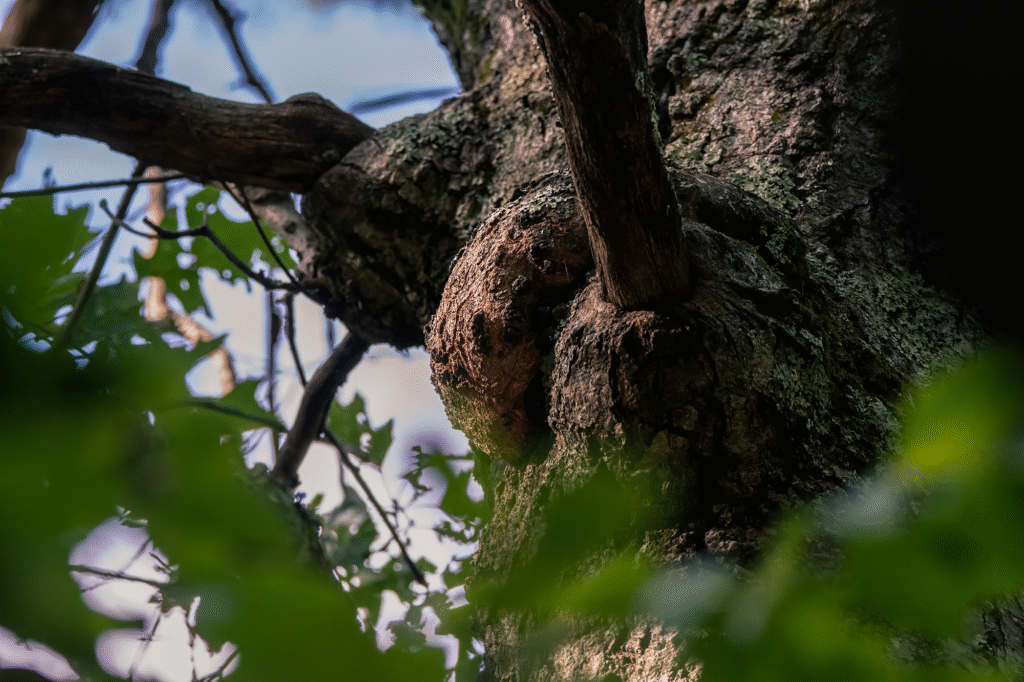
What Causes Burls to Grow?
While the exact process that causes burls is still being investigated, most experts agree that burls are a tree’s response to stress. Common triggers include:
- Injury: Physical wounds from storms, animals, or human activity can set off burl growth. Sometimes burls form when branches break off or are pruned.
- Infection: Bacteria, viruses, fungi, and even mites can disrupt the normal growth pattern of a tree, leading to burl formation.
- Environmental Stress: Changes in weather, flooding, or poor soil conditions can also play a role.
When a tree experiences an injury or infection, cell growth in that area is accelerated to seal the wound and protect the tree as it heals. Sometimes that growth goes a little wild, speeding up even more but in an irregular, disjointed manner, absorbing unsprouted bud tissues into a dense mass. Not all injuries and infections result in burls; it’s only when the cells get super-charged that burls develop.
Often, the original cause is long gone by the time a burl becomes noticeable, leaving only the telltale lump as evidence. In a way, burls are scars that reflect a tree’s lived experience, signs of past injuries overcome, testaments to the tree’s resilience.
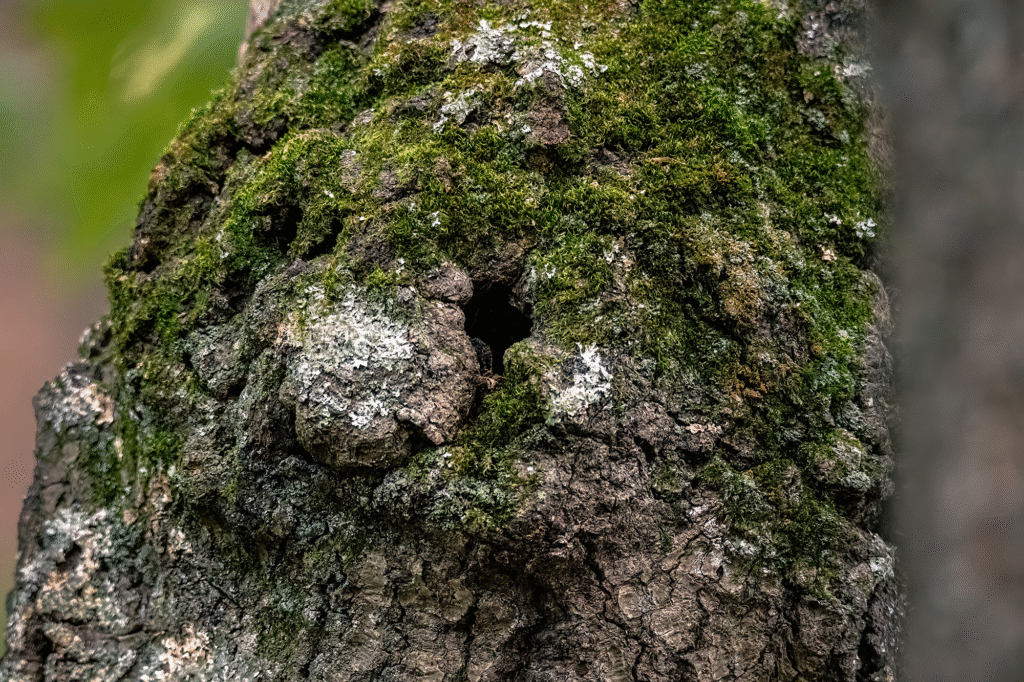
Are Burls Harmful to Trees?
Despite their unusual appearance, burls are rarely a cause for concern when it comes to tree health. They’re generally considered benign, much like a slow-growing, non-cancerous tumor in humans. In most cases, burls do not affect the longevity or vitality of the tree. In fact, removing a burl can be far more damaging, as it exposes the tree to pests, disease, and decay.
Burls in the Wild: Where to Find Them
Burls can grow on nearly any tree species, but they’re especially common on maples, oaks, elms, willows, and redwoods. Some, like the massive basal burls of coastal redwoods, can weigh hundreds of pounds and even sprout new trees if conditions are right. These burls serve a unique function, helping redwoods regenerate after fire or injury, and even anchoring trees in rocky or unstable soils.
Nature’s Hidden Art: The Beauty and Value of Burl Wood
For woodworkers and artisans, burl wood is highly desirable. The dense, unpredictable grain patterns, some of which are called “bird’s-eye” or “curly” grain, make each piece one-of-a-kind. Burl wood is prized for high-end furniture, decorative bowls, musical instruments, and luxury car interiors. Its rarity and beauty can command premium prices, making it a target for both legal and illegal harvesting. Yes, burls have been poached which can leave the tree weakened and vulnerable to infection and infestation.
But working with burl is not for the faint of heart. The same twisted grain that makes it unique and beautiful also makes it unpredictable and challenging to shape. Not to mention, woodworkers are taking a chance when they acquire new burl wood: inside might be a masterpiece of natural design, or a mass of misshapen, unusable wood.
Burls and the Forest Ecosystem
Beyond their aesthetic and economic value, burls play a vital ecological role. They provide shelter and microhabitats for insects, fungi, and small animals, supporting biodiversity in forest ecosystems. The genetic diversity stored within burls can help trees adapt to changing environmental conditions, acting as a living archive of resilience and adaptation.
Burls vs. Galls: What’s the Difference?
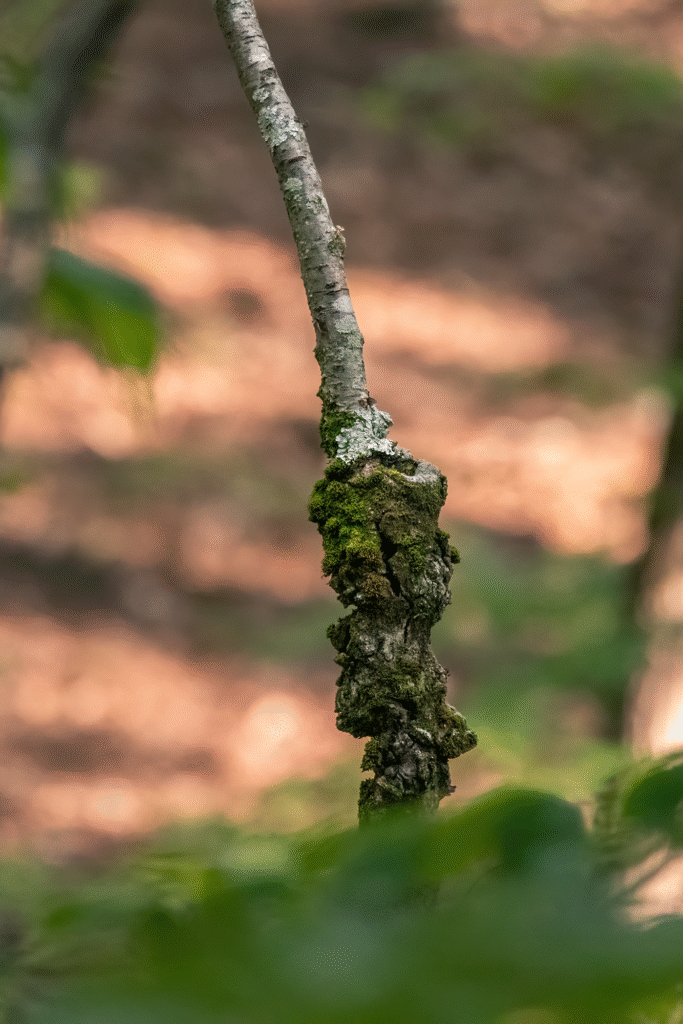
It’s easy to confuse burls with galls, another type of abnormal tree growth. Both are caused by excessive cell division, but galls are typically smaller, irregularly shaped, often caused by insects, and may include ingrown bark or staining. Depending on the type, galls can harm the tree they grow on, especially if due to insect infestation. Burls, on the other hand, are characterized by their large, more regular, rounded shapes, and swirling, contorted grain. Burls are usually covered by bark although that bark may become worn and smooth over time. They are rarely harmful to trees.
Should You Remove a Burl?
In almost all cases, the answer is no. Removing a burl is akin to making a major wound in the tree, which can lead to infection, decay, and even death. If you spot a burl on a tree in your yard or on a hike, the best approach is to leave it be and appreciate the peek at the tree’s past story and resilience.
A Final Thought: Don’t Judge a Book (or a Burl!) By Its Cover
Tree burls are a reminder that nature doesn’t always follow straight lines or predictable patterns. They may not look pretty on the outside but there is beauty within burls, not just in their unique wood but in the resilience they document. Burls are a living record of a tree’s struggles and triumphs. So next time you pass a tree with a strange, knobby growth, pause and take a closer look — you’re witnessing a remarkable and mysterious marker of a tree’s history and fortitude. But maybe don’t go too close in case there really is an alien inside. 😉
Have you seen burls before? Have any photos to share? Please comment below or share on From Flora to Fauna’s Facebook page!

